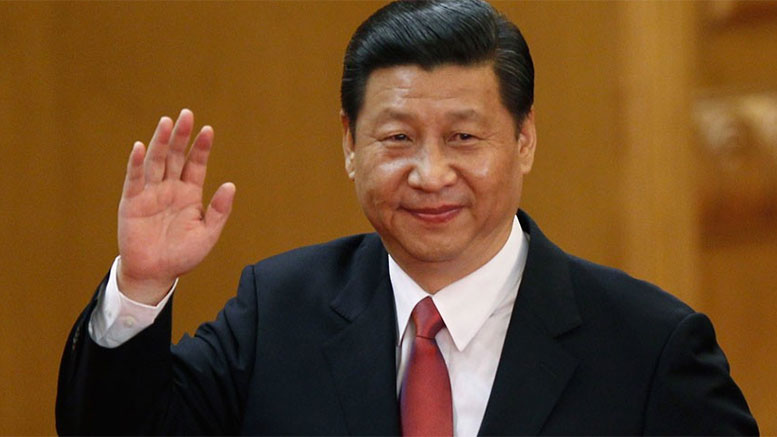China and Serbia Expanding Cooperation
| Activities - Comments |
Zivadin Jovanovic, Belgrade Forum for a World of Equals
 China's leader, Xi Jinping
China's leader, Xi Jinping
Serbia and China cultivate a long tradition of friendship and mutual trust enjoying mutually beneficial cooperation. Presently, when certain European, American and other countries compete to win Chinese cooperation, Serbia is already endowed with the capacity and the basis to enhance cooperation with the second strongest economic power in the world and to upgrade mutual relations to the strategic level. In fact, that is exactly what Serbia is doing. The forthcoming visit of Chinese President Xi Jinping and expected signing of General agreement on strategic relationship will certainly accelerate this cooperation in all fields.
China and Serbia perceive each other as stable, reliable partners in long run. Serbia, although relatively small economy, commands considerable capacity for future development, especially in the fields of infrastructure, energy and food production. In addition, Serbia occupies favorable geopolitical position being at the same time South European, Central European and Danube country. As cross-roads between various regions and even continents, Serbia is the door and bridge to other destinations for economic cooperation with Europe. It was not mere coincidence that in December of 2014 capital of Serbia Belgrade was the vanue of “China + 16” Group Summit, comprising Central and Southeast European countries jointly participating in the implementation of the “Road and Belt” mega-project, better known as the 21st Century New Silk Road. So far, China has allocated $ 13 billion for the projects in these countries, out of which 1.5 billion is earmarked for Serbia.
Chinese companies have already constructed the “Mihailo Pupin” Bridge over the Danube River, in Belgrade, plus 21 km of access highway. Plans for the construction of the second bridge over the Danube near Vinča, along the European Corridor X, and a bridge over the Sava River, near the Town of Obrenovac are in advanced stage. Chinese Hessteel Co., the second largest steelmaker in the world, has recently bought the Smederevo Steel Plant that employs 5,050 workers, and owns a port on the Danube and a Tinplate Factory in the City of Šabac (on the River Sava). A further agreement was reached with Chinese partners to construct the Thermo Power Plant “Kosotolac B”. This project, includes also construction of another port on the Danube and an 18 km-long railroad section for the transport of necessary equipment.
Therefore, in economic terms, Chinese companies have already settled on the Danube, thus increasing the significance of this strategic inland water European Corridor VII.
The Tripartite Partnership of Serbia, Hungary and China has initiated construction of the high-speed railway connecting Belgrade and Budapest. This project is just a part of the of strategic railroads on European Corridor X, running from the Mediterranean Ports of Piraeus and Thessalonica, in Greece, through Macedonia, Serbia and Hungary, to the countries in the Central and the North Europe – all the way to the Northern and Baltic Seas. Taking in consideration plans of Chinese engagement in the modernization of transport lines connecting Belgrade and the Port of Bar (Adriatic, Montenegro), then Chinese companies` interest in privatization of a number of Serbian companies, then the full potential and the perspective of economic cooperation between the two countries become much clearer.

Pupin Bridge
It seems that the importance of the rapid rise in economic cooperation with China goes beyond the point of its substantial input to GDP growth and employment, although both of them make very significant parameters. Provided that the current trend continues -- and there is no reason to expect otherwise -- it could gradually affect the layout of Serbia’s economic interests at the international level, focusing them into a more balanced position.
Over the recent years, the EU has been busy dealing with itself, suffering from serious crisis of the system, nationalism and particularism on rise, technological and economic stagnation, Eurozone crisis, capital outflow, migrants, “Brexit” and other “exits”, and Transatlantic “encouragments” to increase its military expenditure (truncated G7 Summit in Hanover). The USA has been busy intimidating its allies by using, once “dangers” from Russian, other time, from China. Russia is faced with decline of oil prices, with the need to modernize economic structure, to alleviate consequences of US sanctions implemented by “European partners”, forcing her to spend more on defense. The world witnesses a dramatic widening of the divide between the masses of poor and the handful of extremely rich, with poverty, unemployment and misery dominating the globe.
China extends her friendly hand to offer partnership, networking, innovation, and mutual benefit towards all four sides of the world.
Every now and then, one wonders – why should the West feel it necessary to publicly lament over apparent “slowdown of Chinese economic growth” falling from former 9% to present ‘mere’ 7.5%! Who, really, is doing better in time of prolonged global economic crisis?
| < Prev | Next > |
|---|
| Overstatement from Davos 2017. |
Liberal corporative capitalism, for reasons of lowering traveling costs, proposed not to travel to history alone but packed togather with NATO, EU and unipollar World Order. Workers participation has good chances to step in provisionally, buying time for full scale workers selfmanagment. |









